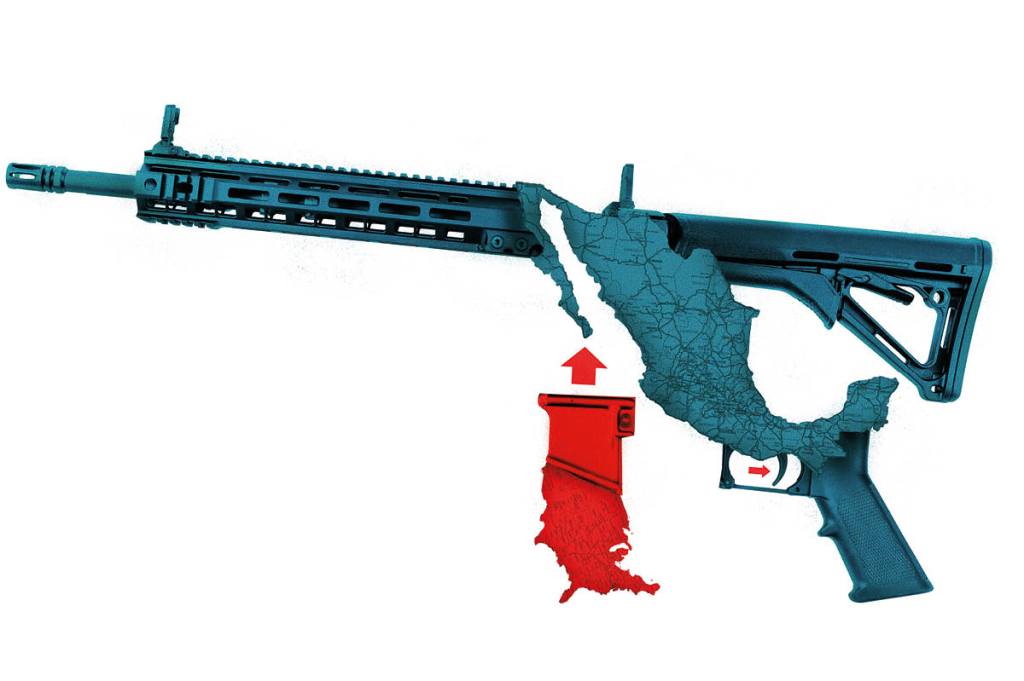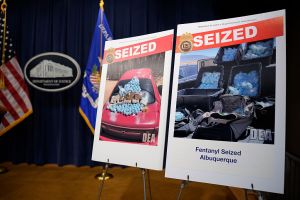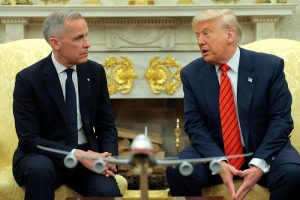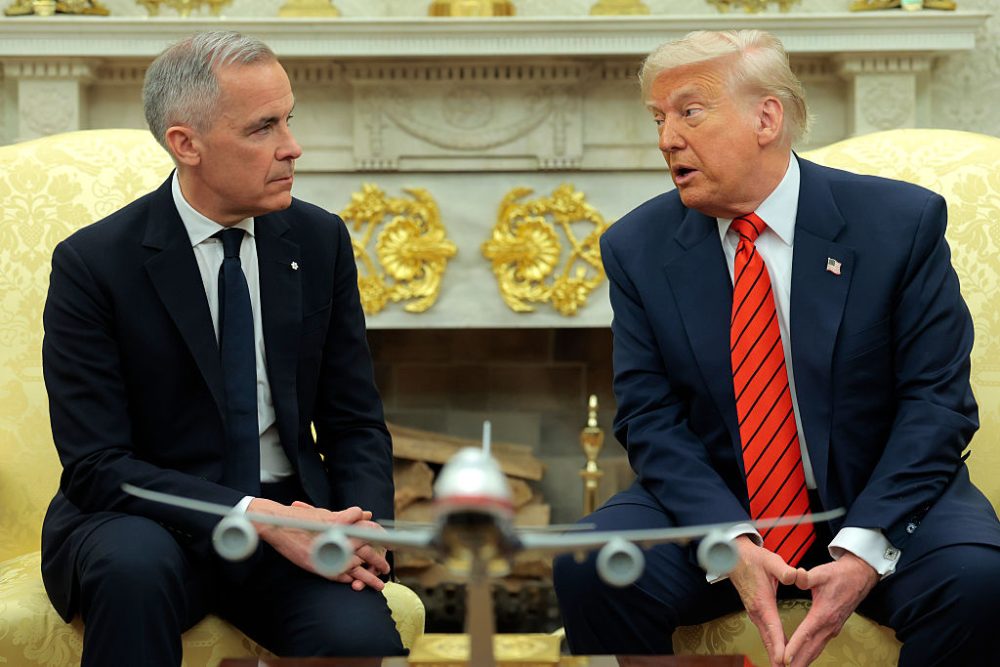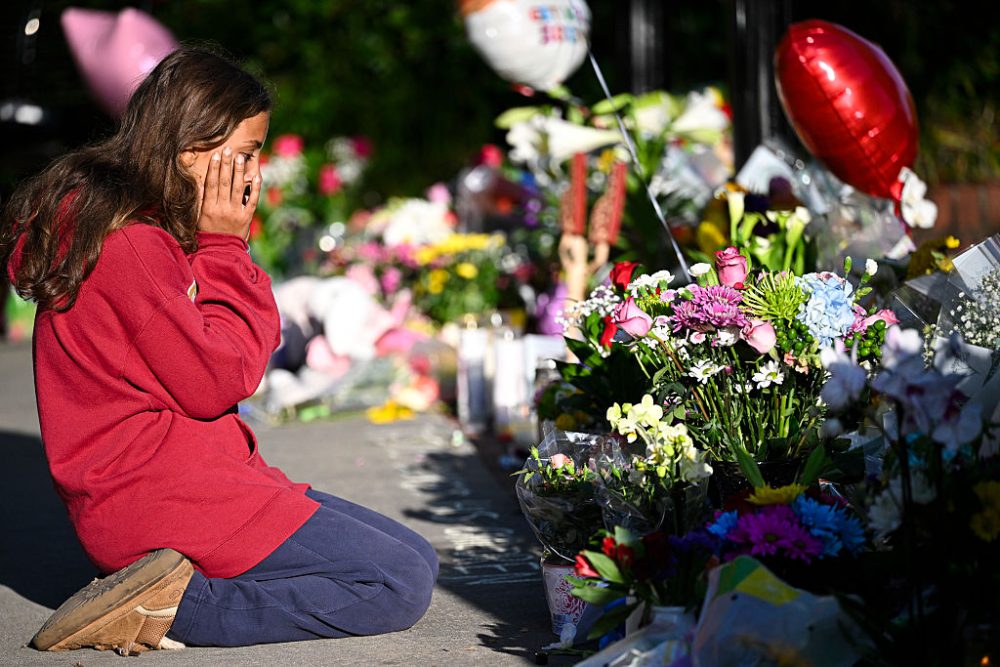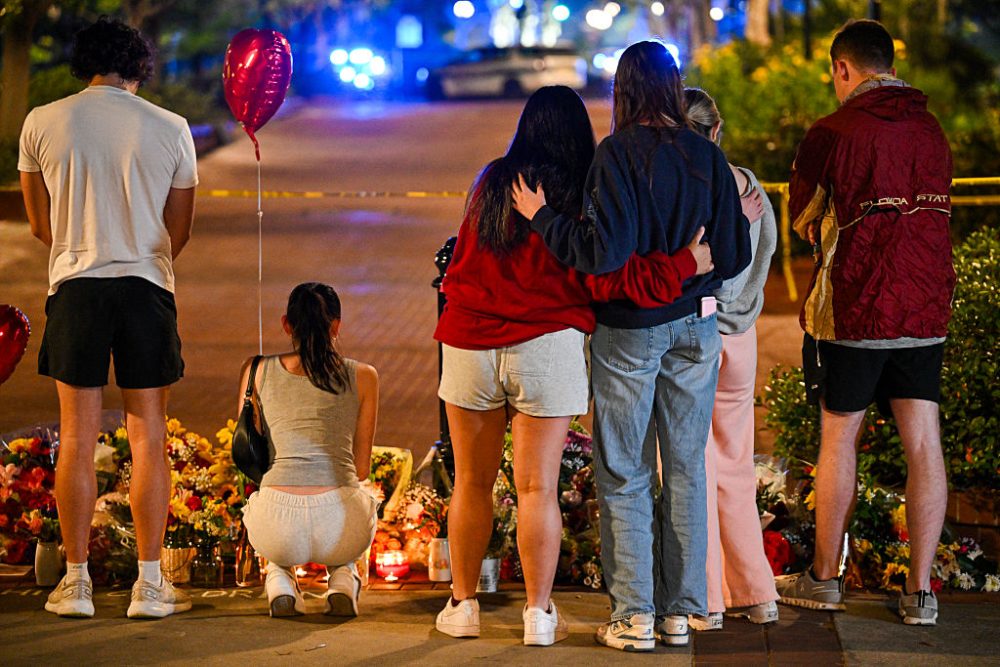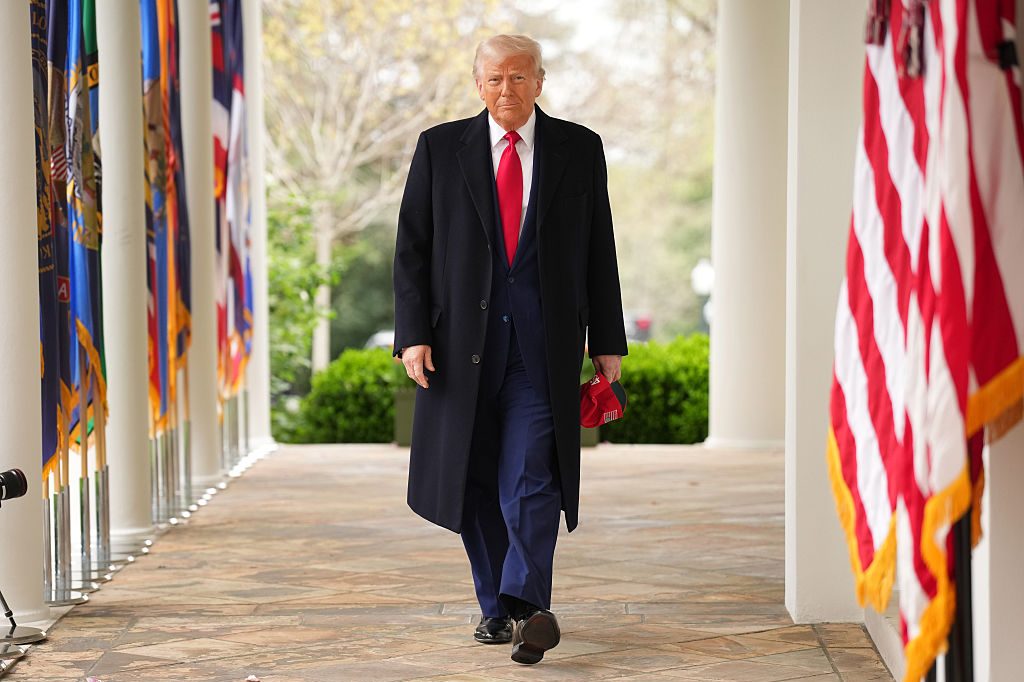Latavia McGee crossed the US border with three friends on March 3. The North Carolina resident was looking for the Mexican clinic for her tummy-tuck operation when she came under gunfire. Two of the group, McGee’s cousin Shaeed Woodard and friend Zindell Brown, jumped out of the back of their vehicle and tried to flee but were cut down by bullets. The third friend, Eric Williams, stepped out the driver’s side and was shot in the leg. The gunmen, who worked for the drug-trafficking mafia known as the Gulf Cartel, ran over, loaded the Americans onto a pickup truck and then held them in vehicles and stash houses for days. Woodard and Brown wouldn’t make it through the kidnapping; McGee watched them die from their wounds.
“I talked to him the whole time,” McGee said of Brown, weeping, on CNN. “I just told him I’m sorry because I asked him to come with me, and he’s like, ‘It’s OK, I’m your brother, I’m supposed to be there for you. I love you.’” Mexican police found McGee and Williams alive in a shack near the border on March 7.
While the vast majority of murders in Mexico are never solved, the suspects behind this atrocity were handed quickly over to the Mexican police — by the Gulf Cartel itself. The mob left the five men handcuffed by a car with a note that apologized and said the attack had been a mistake. “We ask the community to be calm because we are committed that these errors, caused by a lack of discipline, will not be repeated,” it said.
Mexican police also seized one of the guns used, a Diamondback AR-15, and gave the serial number to officials in the US Bureau of Alcohol, Tobacco, Firearms and Explosives. ATF traced the firearm to Texas, where Roberto Lugardo Moreno, a resident of Harlingen, had purchased it in 2019. Prosecutors allege that Lugardo was a “straw buyer,” someone with a clean record who gets guns for criminals and had been paid $100 by the Gulf Cartel to acquire it. He was arrested and held pending a trial.
The fact that a weapon wielded by cartel triggermen was traced over the Rio Grande is unsurprising. In the entire country of Mexico there is only one gun shop. Run by the army, the Mexico City store requires customers to hand in seven types of paperwork, including proof of a clean record and a letter from their employer, and wait months for the sale to be approved. But between 2007 and 2021, 192,000 weapons seized by Mexican security forces were traced to US gun shops and gun factories. The Mexican government believes this is only the tip of the iceberg and estimates that more than 200,000 firearms are trafficked over America’s southern border every year.
While gunrunning south has been a problem for decades, it has recently shot to the top of the US-Mexico agenda. In 2021, the Mexican government sued key US gun companies for negligence over the traffic. In 2022, a judge dismissed the case but the Mexican government appealed and filed a second suit against individual gun shops. When a team of top Mexican officials flew to Washington in April to discuss security issues, foreign secretary Marcelo Ebrard said, “Mexico’s priority is to stop the trafficking of guns from the US to reduce the firepower of criminal organizations” as well as fight the drug trafficking north. Following the meeting, the White House promised to “target southbound firearms flows.”
The issue is especially pertinent amid the severity of the fentanyl crisis and calls by some Republicans to classify Mexican cartels as terrorist groups and unleash the US military on them. In 2021, there were a record 107,000 overdose deaths in the United States and traces of fentanyl were found in 71,000 of the victims. US Customs and Border Patrol agents seized a record 6,600 pounds of fentanyl in the first quarter of this year, with the Sinaloa Cartel and Jalisco New Generation Cartel dominating the trade.
In January, Dan Crenshaw, a Republican from Texas, and Mike Waltz, a Republican from Florida, introduced a bill in the House to authorize military force against the cartels in retaliation for the overdose epidemic. “The cartels are at war with us — poisoning more than 80,000 Americans with fentanyl every year, creating a crisis at our border, and turning Mexico into a failed narco-state,” Crenshaw said. “It’s time we directly target them.”
While their military approach might raise eyebrows, these hawks are at least right that the fentanyl crisis and the violence of cartels are serious issues that need to be addressed. But following this logic, Washington more than ever needs to drain the “iron river” of guns that pours into Mexico. Any serious US effort to curb the cartels should start with the gun trafficking problem. The United States could significantly reduce the southward flow of guns without curtailing the Second Amendment or getting into thorny debates about assault rifle bans.
I have been covering the cartels in Mexico for more than two decades and spent four years reporting on a book on gun trafficking, Blood Gun Money. The research took me to a prison in the sprawling city of Ciudad Juárez, and the inmate Jorge whom Mexican soldiers had caught with a stash of weapons he had smuggled over the border. Many small groups such as the one Jorge ran traffic guns over the border, working with and supplying weapons for the cartels.
A soft-spoken, slim man with a goatee, Jorge began trafficking guns when he was just nineteen and struggled to look after his wife and baby with the money he made in construction in his town in Chihuahua state. He had a US visa and went to Dallas to buy clothes and boom boxes to sell for a markup back home. On one of these trips, a friend asked him to get an AR-15; when he delivered it the friend asked for many more.
Jorge became part of a three-man team, including a friend in Dallas who helped him get the weapons and the man in his hometown selling them. He would buy the rifles in Texas for approximately $500 to $700 apiece and sell them for over $2,000. He bought a dozen or so guns on each trip, stashing them in fridges and stoves as he drove into Mexico.
Jorge bought most of these rifles at gun shows, seeking out those that didn’t ask for identification in order to leave no paper trail. “There’s a black market right there at the gun show. You buy from the person who doesn’t ask for any paperwork,” he said. “If you go over to a person, ask for the price, and then they say, ‘I need your license,’ then you say, ‘I don’t want it,’ and go with someone else. The seller who tells you they don’t need anything, that’s where I used to buy.”
Jorge carried on trafficking for almost two years, selling hundreds of guns for triple their purchase price, buying a house in cash and enjoying an extravagant lifestyle. “At the beginning I felt bad, but I got used to it. In the end I didn’t care,” he said. “It’s the way you can have a good time. You sell weapons, you earn money and you have fun. I bought a brand-new truck, a motorbike, women, drugs. I had everything.” He only stopped when he got into an argument with his cousin, who promptly informed on him to soldiers. “If I hadn’t gotten snitched on, I would maybe still be working on the same thing.”
Following Jorge’s story, I traveled to a huge Dallas-area gun show with 700 stalls. Most sellers were licensed dealers who asked for identification. But I also found the private sellers who offered guns without requiring any paperwork at all. Under what is known as the “private sale loophole,” people who are collectors or just want to get rid of an old gun are allowed to sell weapons without asking for identification or doing a federal background check, which is the screening process used to stop convicted felons from acquiring weapons. However, I saw people who were not just hobbyists but were abusing the loophole to offer large numbers of brand-new weapons. “No tax, no paperwork, out the door,” a seller said. “That one’s unfired. We got one magazine with it.”
There are a number of documented cases of people abusing the loophole to knowingly sell large numbers of weapons to criminals. In Florida from 2009 to 2010, Vietnam veteran Hugh Crumpler purchased 529 guns from shops and resold them at shows without paperwork. Following their sale, federal agents traced them to a group of Honduran traffickers; they were implicated in five shootings from Colombia to Puerto Rico.
One way to shut down this dangerous enterprise would be to require universal background checks on all sales. Polls show there is strong support for them; in 2022 Morning Consult and Politico found 88 percent in favor of them and only 8 percent opposed. Yet even without these, the ATF could more aggressively pursue anyone “engaged in the business of selling without a license,” especially if a clampdown had broad political backing.
The second big way the cartels acquire weapons is through straw buyers — the accusation Lugardo faces in the recent attack on the Americans. Prosecutors say he was paid just $100 to get the gun, which matches amounts in many other cases I have seen. The reason that the fee is so low is that for a long time there have been few consequences, with those buying them often getting probation for simply lying on the form. “They’re not going to get any jail time. What’s the deterrent factor?” said Steve Barborini, a former ATF agent.
Such soft penalties for straw buyers could be changed following the Bipartisan Safer Communities Act approved in June 2022. While the media coverage fixated on the clauses regarding mass shooters, almost all missed section 12004, which focuses on firearms trafficking and establishes that straw buyers can be given up to fifteen years in prison. However, the challenge is to see the law enforced, which again could be helped with political pressure.
A further hurdle will be intercepting and preventing the sale of “ghost guns,” often made from kits sold on the internet; they have, of course, no serial numbers. I visited the ATF offices in Los Angeles right after they had busted a gang whose small factory churned out guns with black and red parts. A gang member was caught with red ink all over his hands — literally red-handed. “Right now, what we’re seeing is Southern California is approximately 30 percent of the firearms that we seize or buy off the street are non-serialized homemade guns,” said ATF spokesperson Ginger Colbrun. “These guys are making them hand over fist… It’s fine if you are a hobbyist and you want to make your gun, and that’s your thing but it’s prohibited people taking these.”
Mexican cartels also like ghosts. In 2014, police in the state of Jalisco raided a pair of workshops where criminals affiliated to the Jalisco Cartel had assembled a hundred rifles. For a long time, the gangsters have been able to buy gun kits off the internet with no ID or background checks because they’re only parts, not finished products. However, a new “Frame or Receiver” rule from the ATF went into effect in August, requiring the same procedure for gun kits as for regular guns. Yet again, the agents need to enforce it and political will could help this.
Firearms that use whopping .50 caliber bullets — ammunition for military machine guns — are coveted by the cartels. While these guns are a fairly niche product in the United States, costing upwards of $8,000, cartel gunmen want them to fire at security forces. They pierce the metal of police cars and can disable the engine on a large boat. Video of a 2019 firefight shows one blowing the leg off a Mexican soldier. In states such as Arizona straw buyers can get them with a simple identification. An extended background check, even of twenty-four hours, would deter many of the cartel affiliates from walking away with these weapons of war.
While the United States can do much to tackle the problem, Mexico also has a huge amount of work to do to stop gun trafficking. Immense corruption aids the vast proliferation of guns south of the border. In the infamous barrio of Tepito in Mexico City, I interviewed an army veteran-turned-gunseller who began selling firearms when he served, returning seized weapons to the street. His officers ran the racket.
“We had a saying,” he told me. “‘There is no general who can withstand a cannonball of a hundred million pesos.’” (I later found out this is a variation on a saying by Álvaro Obregón, a Mexican revolutionary general and president. He was assassinated in 1928.)
There are many such cases of seized guns being resold. In 2019, a man in Cuernavaca was caught on camera killing two labor leaders with a Glock .9 millimeter. It turned out the gun had previously been seized by police, but mysteriously disappeared from the vault.
Sometimes, the security forces sell their own guns. When federal troops took over the police base in Acapulco in 2018, they discovered that 342 guns, or 19 percent of their armory, were missing. Other towns have suffered the same fate. Between 2006 and 2018, there were officially 15,592 guns that went missing from Mexican police or soldiers, Mexico’s defense department reported.
Latin American security forces are also the source of many of the heavier weapons. In 2010, thieves sold twenty-two RPG-7s from a Honduran military armory, and the weapons began turning up among Mexican gangsters. Truckloads of M-67 grenades have been stolen from stockpiles in El Salvador and trafficked north. They actually originated in the United States, given to bolster the Salvadoran government in that country’s civil war back in the 1980s.
Still, if Latin American security forces were selling all their guns to criminals, they would be on the streets disarmed, but they still manage to have enough for their own personnel. Per year, Mexican police and soldiers are officially losing fewer than two thousand guns. Meanwhile, there are hundreds of thousands of cartel affiliates in Mexico. So while the theft from Mexican security forces provides a few of their weapons, trafficking from the United States provides far more.
The violence in Mexico often takes on the dimensions of an armed conflict. There were more than 30,000 murders last year in a country of 127 million; firearms were used in 70 percent of the deaths. The violence is not spread evenly — some cities, such as Mérida, can be relatively safe; others like Tijuana and Fresnillo are among the most homicidal on the planet.
Cartels use the guns to run full-on paramilitary forces and drive through towns in convoys of trucks with men in khaki showing off their firepower. In 2019, when police and soldiers arrested Ovidio Guzmán, the son of the drug lord El Chapo, an estimated 700 to 800 Sinaloa gunmen took to the streets until he was released. When a force of 3,500 soldiers rearrested him this year, cartel gunmen fired on a passenger plane trying to leave the airport.
It’s in the interest of the United States not to have such an unstable county on its doorstep. Americans crossing over become victims. Refugees flee the bloodshed and apply for asylum in the United States. And violent mafias run the human smuggling and drug trade. Mexico has to take the responsibility of restoring order. But that task would be massively helped if the gunmen did not have an unlimited supply of guns rushing south along the “iron river.” As the Mexican government wrote in its lawsuit: “This flood is not a natural phenomenon.”
This article is taken from The Spectator’s June 2023 World edition.



